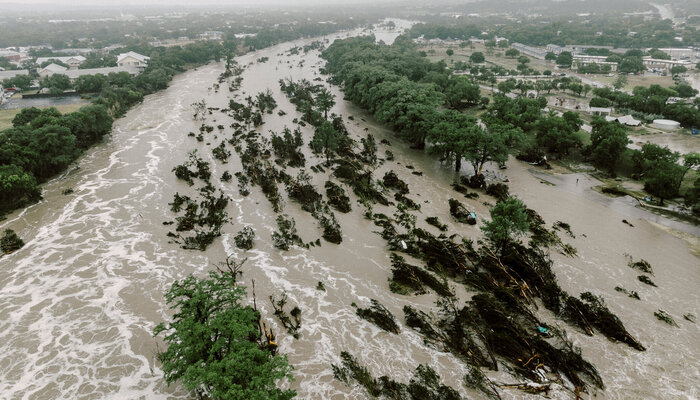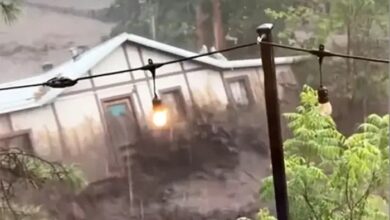
In a catastrophic turn of events, the Guadalupe River in Hunt, Texas, surged by a staggering 26 feet within just 45 minutes early Friday morning, July 4. The rapid rise in water levels, triggered by an unprecedented downpour, caught residents off guard as a massive flash flood swept across the Texas Hill Country.
Authorities confirmed on Monday that at least 90 people lost their lives in the disaster, making it one of the deadliest flash floods in recent Texas history. Flash floods, notorious for their suddenness, occur when intense rainfall overwhelms the ground’s capacity to absorb water. In this case, between six to ten inches of rain fell in merely three hours over a small area along the south fork of the Guadalupe River.
Perfect Storm of Conditions Triggers Disaster
Meteorologists point to a convergence of extreme weather conditions that fueled the flood. The storm that hit the area lingered over the same zone for an extended period, dropping massive volumes of rain in a short timeframe. The ground, already saturated or hardened due to previous weather conditions, failed to absorb the water quickly enough. This forced water to rush toward the lowest-lying areas and into the Guadalupe River’s bed, which had low water levels before the storm began.
Trump Targets BRICS: 10% Tariff Threat for Nations Opposing US Policies
Adding to the severity, the storm moved in the same direction as the river’s natural flow. According to retired National Weather Service meteorologist Alan Gerard, this alignment can dramatically increase river levels. Gerard noted on his blog that at one gauge, the river went from 7.7 feet with a flow of 8 cubic feet per second at 1:00 A.M. to more than 29 feet and 120,000 cubic feet per second by 4:30 A.M.—a dramatic increase that overwhelmed local defenses.
Water’s Power Leaves Widespread Devastation
The flood’s sheer force devastated communities along the Guadalupe River. Flash floods are deadly partly because of how quickly they form—and how powerful they become. Just six inches of moving water can knock an adult off their feet. Two feet of water is enough to carry away cars, and when water velocity increases, the pressure exerted on structures and vehicles rises exponentially.
Rescue teams continue to search for missing persons and provide relief to displaced residents. Officials have warned that the death toll could rise as floodwaters recede and recovery operations continue.
Residents and climate experts alike have called for improved early warning systems and better infrastructure to handle extreme weather, which many link to ongoing climate change trends. Texas Governor’s office has declared a state of emergency, unlocking federal aid and rescue coordination to assist the affected region.
Follow us on Instagram, YouTube, Facebook,, X and TikTok for latest updates
















